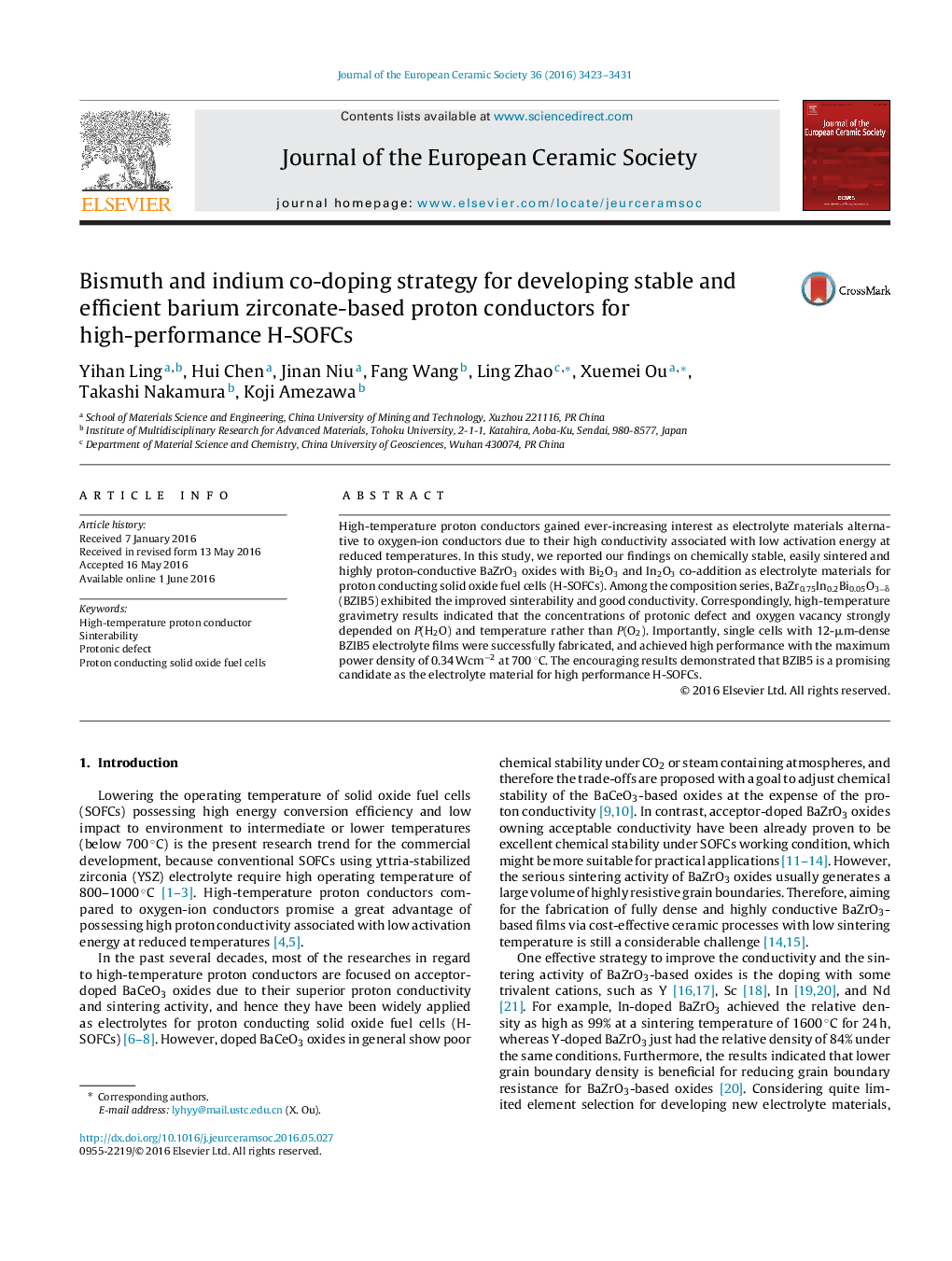| Article ID | Journal | Published Year | Pages | File Type |
|---|---|---|---|---|
| 10629224 | Journal of the European Ceramic Society | 2016 | 9 Pages |
Abstract
High-temperature proton conductors gained ever-increasing interest as electrolyte materials alternative to oxygen-ion conductors due to their high conductivity associated with low activation energy at reduced temperatures. In this study, we reported our findings on chemically stable, easily sintered and highly proton-conductive BaZrO3 oxides with Bi2O3 and In2O3 co-addition as electrolyte materials for proton conducting solid oxide fuel cells (H-SOFCs). Among the composition series, BaZr0.75In0.2Bi0.05O3âδ (BZIB5) exhibited the improved sinterability and good conductivity. Correspondingly, high-temperature gravimetry results indicated that the concentrations of protonic defect and oxygen vacancy strongly depended on P(H2O) and temperature rather than P(O2). Importantly, single cells with 12-μm-dense BZIB5 electrolyte films were successfully fabricated, and achieved high performance with the maximum power density of 0.34 Wcmâ2 at 700 °C. The encouraging results demonstrated that BZIB5 is a promising candidate as the electrolyte material for high performance H-SOFCs.
Keywords
Related Topics
Physical Sciences and Engineering
Materials Science
Ceramics and Composites
Authors
Yihan Ling, Hui Chen, Jinan Niu, Fang Wang, Ling Zhao, Xuemei Ou, Takashi Nakamura, Koji Amezawa,
